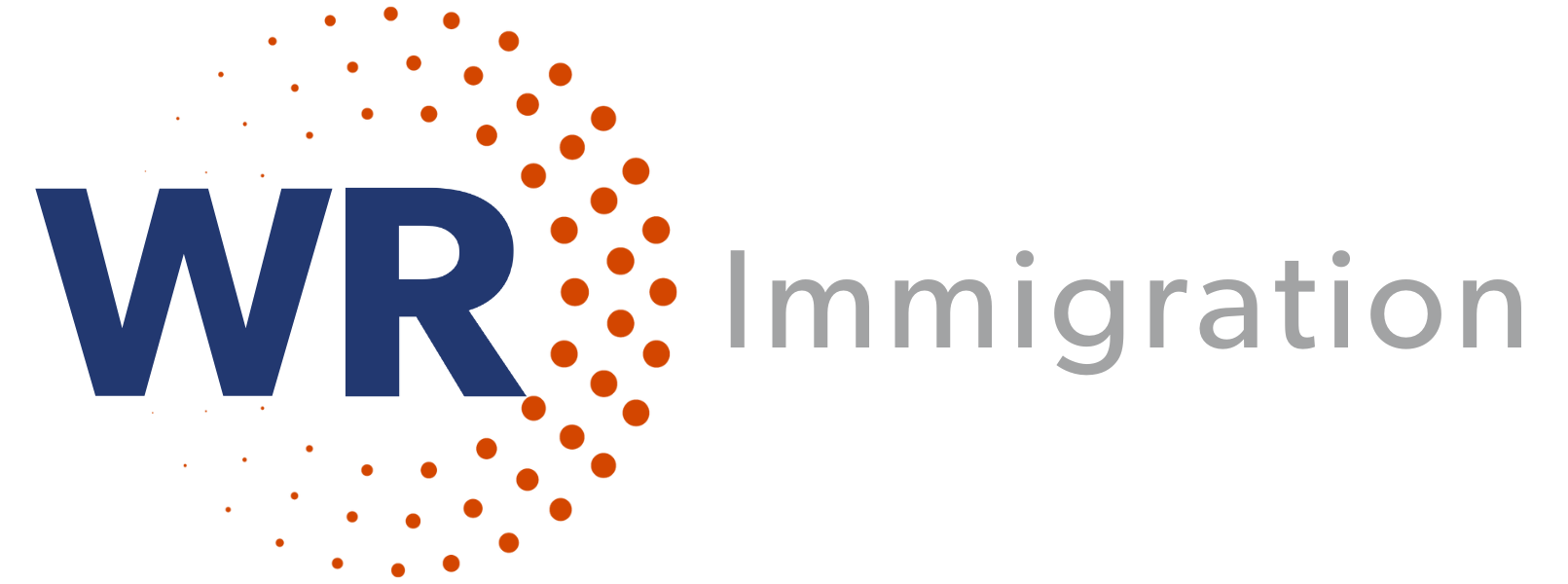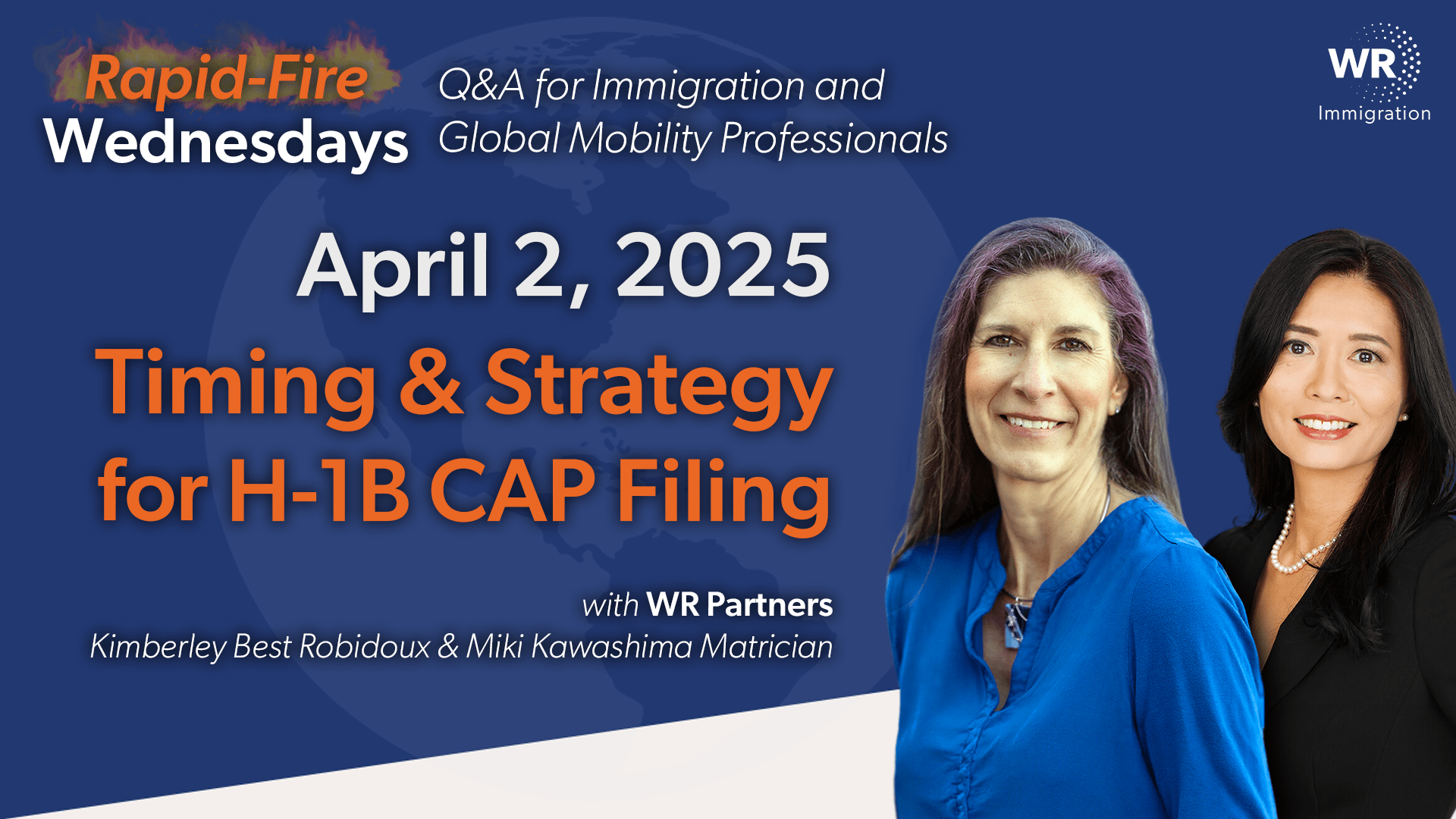The transcript version of our weekly Q&A livestream for corporate immigration professionals. Join our Immigration News Digest Newsletter for more immigration updates.
By Kimberley (Best) Robidoux & Miki Kawashima Matrician
🔥 Question: What was the selection rate for this year’s H-1B cap lottery?
Response: Based on our internal count, the selection rate was around 33%. While this was slightly lower than our firm’s average, last year’s rate was slightly higher, so it balances out overall.
🔥 Question: For those selected, what are the key considerations for filing H-1B cap petitions?
Response: The filing window opens April 1st and closes June 30th. The first priority should be cases where the F-1 OPT is expiring soon. These cases are eligible for cap gap protection through Form I-20s issued by the beneficiary’s school, which bridges the gap from EAD expiration and authorizes continued employment through March 31, 2026, based on the new modernization rules implemented in January 2025.
🔥 Question: What updates has USCIS made regarding work authorization for Cap Gap cases?
Response: USCIS has updated the M-274 Handbook for Employers with instructions on completing and updating Form I-9 for the extended work authorization for H-1B Cap Gap individuals. Employers should reference these guidelines to ensure compliance when processing employment verification for these cases.
🔥 Question: Aside from Cap Gap situations, do you have any general timing tips for filing H-1B petitions based on selection in the H-1B cap?
Response: It’s best not to wait until the last minute. Sometimes, USCIS erroneously rejects properly filed petitions due to administrative errors. Leaving some buffer time allows for any necessary corrections and resubmissions.
🔥 Question: What is the difference between change of status and consular processing when filing an H-1B petition?
Response: When filing an H-1B petition, employers can request a change of status or consular processing. Change of status applies when the beneficiary is physically in the U.S. at the time of filing and will remain until the H-1B takes effect on or after October 1st. If approved, their status automatically changes to H-1B without requiring travel outside the U.S.
🔥 Question: How can someone confirm their change of status?
Response: The I-94 attached to the bottom of the approval notice will confirm the status change. Additionally, from an employer’s perspective, when an employee transitions from F-1 to H-1B, FICA tax deductions should begin.
🔥 Question: What is consular processing, and how does it differ from change of status?
Response: If an employee will be outside the U.S. during the filing window or plans to travel internationally after filing, consular processing is typically the best option. The beneficiary will need to apply for an H-1B visa stamp at a U.S. consulate abroad and re-enter the U.S. to activate H-1B status. There are some exceptions for certain individuals in F-1 status.
🔥 Question: What should HR contacts know about international travel implications on the H-1B process?
Response: HR should always be aware of employees’ international travel plans. Due to the current immigration climate and the possibility of new travel bans, avoiding international travel is recommended. While there is no official announcement yet, reports suggest certain countries may soon face new restrictions. Additionally, individuals whose H-1Bs are filed with a request for change of status should not travel, as this could be considered abandonment of their request. However, an exception exists for F-1 students with an approved H-1B petition and valid EAD. Those individuals may potentially be permitted to travel internationally after the H-1B approval and then return prior to October 1st without needing to obtain an H-1B visa stamp; their status will automatically change from F-1 to H-1B on October 1st. It is important to note that this does not apply to those in their Cap Gap period.
🔥 Question: Can an employee in F-1 status request consular processing to extend their F-1 OPT or STEM OPT before transitioning to H-1B?
Response: Yes, but it’s best for companies to have a policy on when employees must activate their H-1B status. Some employers require activation within one year of the H-1B effective date or by April 1st of the following year, but always before OPT or STEM OPT expires. Setting clear guidelines helps maintain consistency.
Send us your questions via DM or using the below link!
HR Question Submission Form | Rapid-Fire Wednesdays
See you next week!


